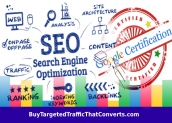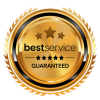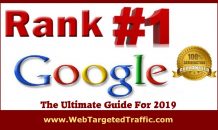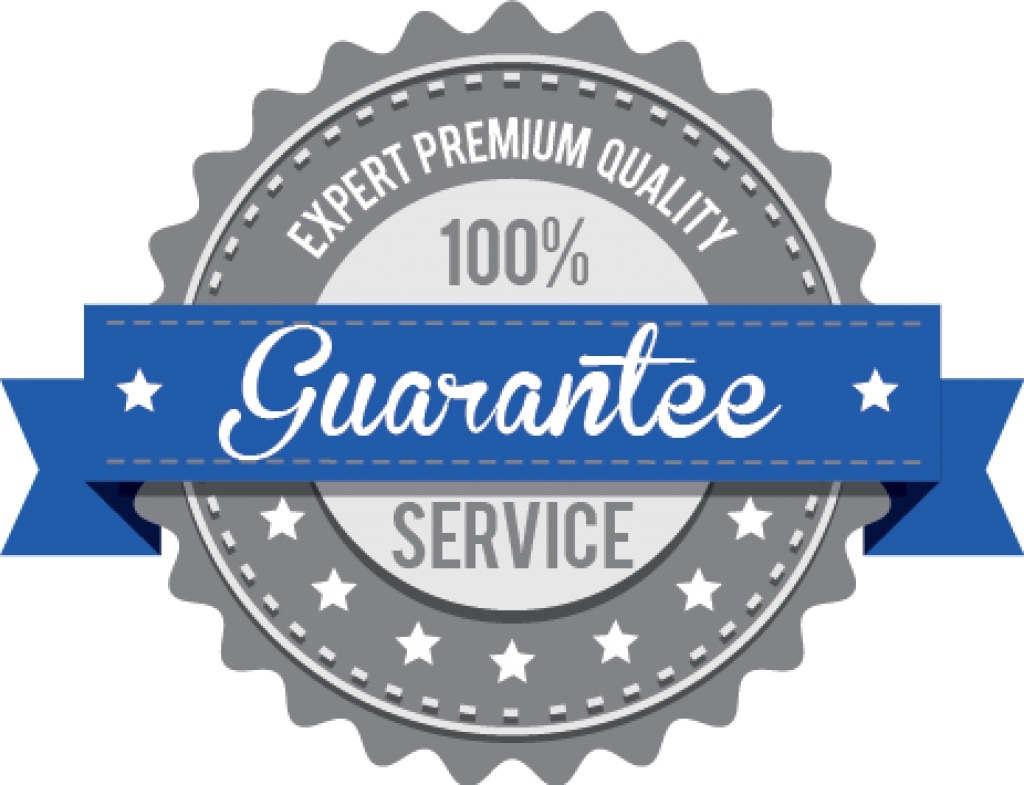
SEO for Beginners: Latest Techniques for Link Building Success
The competition is going to be touching with each passing year. So, what is your strategy to rank in the top position and bring regular traffic through search engine optimization techniques?
If you want to learn SEO, you should be ready for a lot of creative, technical and analytical work. There are many techniques with different goals, however, the main point will remain the same – to be among the highest results in organic searches.
Besides this SEO guide for beginners, there are many great sources that will help you to learn SEO and improve your optimization skills. We have picked the top ones for you!
Learn the latest SEO techniques.
Table of Contents
What Is SEO And Why Do I Need It?
Let’s quickly cover this point. SEO stands for search engine optimization and is supposed to ensure that your website and content have the best chances to rank high on the search engine result page (SERP). Simply said, it means that you want to optimize your website and content in a way so that search engines such as Google can understand what your website and content is about so that it can rank them high for specific keywords.
To prosper as a digital marketing expert or an online entrepreneur, all you need to know is the marketing of your website or how to store on organic search. We have prepared a list of the 11 best SEO techniques that can rank your website properly.
If you are looking Best SEO Training in Scandinavia Then KBI Marketing is the ONE 🙂
1. Write at least 1800 words
After an in-depth evaluation, it is found that content with more than 1,800 words will appear in the first pages of the SERPs. This suggests that longer content will probably result in higher rankings in most search engines. If your content is more than 1800 words (with relevant keywords), ranking on the first page will be more likely.
From an SEO point of view, longer content is more powerful as it includes more keywords and also provides more information that is beneficial to the user. The quality of your content is very important because users look for unique and interesting content that they find worth sharing. So, if you want users to actually be interested in your content, it has to be of high-quality.
Longer blog posts also help with dwell time. Dwell time is the amount of time that passes before a user returns back to the search engine results page. Longer content that is engaging and high in quality will make people stay longer on your website and read more. At the same time, longer dwell time is very beneficial for your ranking because it is a sign for Google that people enjoy your content.
2. Optimize The Title, Meta, Heading And Sub-Heading Tags
You already have long and high-quality content, and you are a pro at including keywords? Then what about your title, meta, heading, and sub-heading tags?
– Title Tag
The title tag is the strongest on-page tag indicator and carries significant weight for your SEO ranking. In case it is your first encounter with the title tag, this is an example of how users see it:
Refer to this brief checklist to optimize your title tags:
- All titles need to be unique per page
- The length should be no more than 60 characters (space included)
- The title tag should contain target keywords
If you create a title without considering your keywords, you are missing out on ranking opportunities. The title tag should contain keywords that are relevant to the webpage and your content. This tells search engines what the website or page is about and helps it index your site according to those keywords.
Google determines the content of pages from the title tag, so make sure to accurately describe your content. Recall your own search behavior on Google. As soon as you hit “enter” or “search”, you probably skim through the first three results taking a closer look at titles. The more targeted and thrilling the title is, the higher the chances for a click.
Use modifiers in your title. Modifiers are descriptive words that are used with primary keywords. This lets search engines know to return the most relevant webpages that contain related content. Some examples of modifiers are titles that start with “how-to”, “solutions”, “best”, “guide to”, “of the year” or “review of”.
Keep in mind to optimize your title to resonate with what users are looking for, rather than stuffing it with keywords! You can use tools to help you brainstorm the most appealing titles.
– Meta Tag Or Meta Description
A meta description is the short paragraph of text (snippet of information) under the URL which is used as a preview in the search results.
The meta description should be placed in the <head> tag of your page’s HTML, and should typically be up to 160 characters long.
It is important to have a good meta description because it is what the users see when they decide whether or not to click the link to your site. Google may, or may not decide to use your description and may even alter it. Nonetheless, this is one of the places you want to pay attention to as Google will use it when trying to understand what your page is about.
You also want to include your keywords in the meta description to make it appealing to actual readers that are skimming the search engine result pages (SERP).
– Headings And Sub Headings (Like This One)
Headings and subheadings are <h1>, <h2>, and <h3> HTML tags. These are the section titles or that users see on the page.
There should only be one <h1> tag per web page, and this heading should contain the main keyword your content is focusing on. Google checks these tags the same way as it checks title tags, so be ready to optimize this part of your page. Often times, content management systems (CMS) like WordPress automatically include a <h1> tag for you with the title of the page or article. In this case, there is no need to include another one.
The subheadings <h2> and <h3> should also include your target keywords.However, keep in mind to write always for the reader and use headings that help your visitors to navigate your page.
3. Create SEO optimized landing pages
A well-designed and structured landing page can boost lead generation as well as your sales. The landing pages you create will be more gates for inbound search website traffic. Sadly, very few B2B firms fully understand the importance of using specific landing pages to capture new users.
While most users will pay little attention to your URLs, they are important for your basic SEO. The best practice is to keep your URLs as simple as possible. Google wants you to have simple and readable URLs to provide a logical URL structure.
This pretty much just means that instead of numbers you should use text in your URLs and that the URL should describe what the content is about while being as short as possible. Yes, it is as easy as that. Just try to be logical and user-friendly with your URLs.
Next to that, you can use your URLs as a place to put your main keywords. Of course, no keyword stuffing allowed! Remember, as short as possible. However, putting your main keyword into your URL should be no problem.
For example, if you are writing about the best movies of all time, your URL could look something like this:
domain.com/best-movies
But, wait for a second! Don’t start changing all of your URLs now. Unless you think your current URLs have a negative impact on your site, it is better to not change URLs as it can be confusing for Google as well as for your users. Therefore, it is probably better to start optimizing your URLs for your new content.
4. Use LSI keywords to outsmart Google
While LSI keywords are not easy to find, LSI generators, Google-related searches and more are available. In fact, you should not just find a keyword phrase, rather, it is better to focus on LSI keywords because Google wants you. Websites with structured content now receive leverage in Google rankings.
The keywords you want to use should be relevant to your content’s topic so that search engines can index your website correctly. You probably don’t want to confuse search engines by focusing on keywords that are completely irrelevant to your actual products or services, or the main topic of your blog.
However, you also want to focus on keywords that your customers are actually searching for. You might rank number one for a specific keyword, but if no one is searching for that you will end up with zero people visiting your site. It is like selling a product that no one asked for and no one actually wants.
What you should look for are key indicators such as search volume (average monthly searches) and competition scores that show how easy or difficult it is to rank for a specific keyword. Of course, keep in mind that the keywords need to be relevant to your website, product or service.
Additionally, you can use long-tail keywords and LSI keywords to improve your site’s ranking and to give more information to search engines so that they can figure out what your content is about.
Long-tail keywords are terms that are more specific. If you use more specific keywords in your content or your website you increase the likelihood to receive more qualified visitors to your site.
LSI keywords (latent semantic indexing) are keywords that are related to your primary keyword. They are not synonyms but homonyms (similar in meaning), and will help search engines to understand what your content is about.
LSI stands for latent semantic indexing and simply means keywords that are related to the topic that your page is about. Including LSI keywords in your content will help Google and other search engines better understand your relevance to a topic.
You want to include LSI keywords because more and more search engines are looking for more of a topic match instead of a keyword match when returning search results. And how they do that is by looking for LSI keywords.
The idea is that when writing about a specific topic, you would naturally include related words. Say for example, if you have a SEO consulting agency you would naturally include the following related words on your website.
- consultant internet marketing seo
- seo marketing consultant
- seo consultant company
- best seo consultants
- seo internet marketing expert
- seo internet marketing services
These keywords are relevant and helpful for Google to extract information. With this information, search engines can make sure that your content does actually talk about the topic that you want to rank for.
Even though you technically would be using LSI keywords already just by writing your content, it doesn’t hurt to see if you might have missed a few good ones.
5. Link to relevant and authority websites
Everyone wants their website to be ranked high in the SERPs and this is done by getting the website high-quality backlinks. The more backlinks a site has, the higher its DA will be. More DA of a website will result in more rights.
Suppose if 2 websites are competing for the same keywords, same kind of content as well as excellent web traffic, which according to you would rank two more?
Websites with multiple site visitors will rank higher for a specific keyword. If the website has backlinks coming from many high DA websites, it will definitely have a higher ranking in SERPs.
When you link to other domains in your content, it helps search engines understand what your page is about. Having more related and high-quality outbound links on your website can increase your rank by having your site be recognized as trustworthy and of high quality by search engines.
Here are some things you should consider while doing outbound linking:
- Link to relevant blogs,
- No link farms (part of a private blog network),
- Avoid too many outbound links.
When you include links to other sites in your blog article, you can also try to contact those sites to let them know that you gave them a backlink. In doing so, they may find ways to include a link to your site on their page as well. Linking to other websites can be beneficial to both, you and your competitor.
Does linking to other sites help SEO?
When you link to other relevant and high-quality pages it shows Google that your content is valuable and useful for users. Hence, linking to other sites is helpful for SEO as long as you are linking to high-quality and relevant pages.
Also, the owners of those webpages you link to might check out your website and thereby generate some additional traffic for your content. As mentioned, they might even return the favor and give you a backlink in the future. You never know!
Linking to other high-quality pages certainly won’t hurt your SEO ranking as long as you don’t overdo it.
While it is important to receive backlinks and to link to other people, don’t forget to link to yourself.
Internal links are links that go from one webpage to another within the same domain. These links are especially useful because they allow users to navigate through a site.
Internal links can help you promote your own content and your other products or services. So, don’t pass on this opportunity!
6. Customer choice should be prioritized and used in content
Do you know that voice search means that we are changing in the online market? Practically 80% mobile voice search to get results. Voice search is going to get a boost. So, as a search engine optimization expert, can SEO methods to rank higher?
Just make a list of words that your customers enter for information. Build a buyer person appropriately and later target them with those words in your content.
7. Do competitor analysis cleverly
Among the most effective search engine optimization strategies is competition evaluation to rank higher in SERPs. In simple words, you need to observe what your competitors actually do to make room for a keyword and at the same time it is far superior to them.
8. Focus on local SEO
Another modern day search engine optimization method has proved to work efficiently that it is focusing on local SEO. At the present time, the search for ‘near me’ has actually increased as customers are constantly trying to find products and services that are near their geographical area.
You do not need to sell anything online to test local search engine optimization. The main objective is for users to locate their business. When you include your calling information and instructions on your website, users can easily find your company.
9. Conduct technical SEO audits
Unless a website is properly optimized, it cannot be ranked for any keyword. So, optimize seo factors like meta title and meta description, paragraphs, headings, images, and videos. Google ranks a website based on more than 200 ranking factors.
If your website is not effectively optimized for search engines, you cannot rank for any keyword. So, maximize on-page factors i.e. meta title and description tags, headings, paragraphs, tables, pictures, video clips. Google uses more than 200 ranking elements to rate a website. And, some of the most important are:
- Mobile optimization
- Add ssl
- Internal linking
In order to know if your basic SEO is helping your website, you should start tracking your data. Google Analytics is a great tool that can analyze and save all your data. It doesn’t only tracks where users come from, but also how they are getting there. This tool also creates custom reports for you when analyzing your data.
Google Analytics allows you to measure the results of your webpages via real-time data. Data is shown from different channels like organic search, paid search, referrals, social media, and direct traffic.
Having Google Analytics will help you make business decisions on where you should invest your resources and it can guide you on your SEO efforts.
10. Focus on social branding as well as content marketing
Well, this is an evergreen search engine optimization strategy of 2019. You need to work with your content strategy to boost your website ranking. Content and social promotion can be done in many ways. Social promos discuss strategies.
- Social promotion
The most effective way to advertise content on social media is through groups as well as communities. You will definitely need to create multiple IDs to ensure that you do not get to ban your activities due to prevalent promos. Now promote content on social network websites like Facebook, Twitter, Pinterest are one of the few websites that provide a lot of traffic in a very short period of time. You can use Instagram and Snapchat. But these places are only too good for building brand awareness.As you probably know, social media accounts can be a powerful tool for your website and have a Facebook, Twitter, Linkedin and an Instagram account is one of the basics of promoting your website.While social media does not directly contribute to your ranking or to SEO, it will bring you more exposure and traffic to your site which indirectly improves your ranking on Google. In other words, while social media signals are not a direct ranking factor on Google, it certainly impacts the ranking indirectly.Therefore, don’t neglect your social media when doing basic SEO. It is best to optimize your social media posts and to distribute your content among your channels. With some easy tips and tricks, you can leverage the full power of your social media accounts to the max.For example, you can customize your shareable links, and add a Twitter card to your website to promote your products or services.A Twitter card (or Facebook Open Graph code) that is included in your web page will allow you to control the text and images that show up when people share a link to your page on social media. This will not only make your posts more noticeable on social media but also present your content more professionally across all your channelsThere are different types of cards, but they all allow you to go over the 140-character limit and attach media screenshots when you share a post. In addition, you can see how your Twitter card looks by searching up your URL on the card validator tool.Also, don’t forget those keywords and hashtags! We already talked about keywords for your titles, meta description, content, and, and, and. But don’t make the mistake to neglect keywords in your social media content and hashtags. Same rules apply, they should be relevant to your content and its best when they have a high search volume that indicates that people are actually searching for those keywords.A keyword tool can help you find that search data. However, beware of keyword stuffing and only include keywords where it makes sense and is natural. - Content strategy & promotion
Create a blog section for your website and update it on a frequent basis. The more content you upload to the blog site, the more it will take your website to the first page of the SERPs.
This is where content strategy plays an important role and it would also be nice to have content calendars and content posted appropriately.
11. Improve the user experience
If you want your website to get more web traffic and higher search engine rankings, then you need to make sure that it is user friendly. When your website provides visitors with the experience they were expecting or much better; Site visitors have a tendency to invest even more time on your website, which can boost your internet search engine ranking. Google can measure the time spent by a user on a website.
Last but not least, thinking about your users probably is the most essential basic SEO tactic.
As mentioned, there are numerous ways how you can increase traffic to your website: be it referrals, monthly email campaigns, or social shares on Facebook and so on.
While SEO is a completely different story with its own strengths and weaknesses, you can already achieve a lot with some basic SEO improvements to your website. However, the main idea of SEO in today’s digital age is putting the user first.
Always try to think about what your users are looking for, their wants and their needs. When you write content with the purpose to fulfill a need of your customers or to answer one of the questions they are having, you have the best chances that Google thinks that your content is valuable.
So, Just make sure that your content is helpful for your users and customers, and apply the basic SEO tactics we have mentioned so that you have the best chances that Google will rank you high.
Conclusion:
These are just some of the main topics for starting search engine optimization marketing. Start fixing up your webpage and compare yours before and after results. See what works best for you as all pages and industries are different. SEO has been around for quite some time and is always evolving, so make sure to keep your webpages updated.
Always keep this in mind, Google’s top goal is to provide the best experience for their users. That means the most relevant and high-quality webpages are the ones that will rank high. The tips we have listed above are signals that search engines rely on to indicate if a page is worthy and of high quality, and can, therefore, help your page to rank as high as it deserves.
Whether you are a website administrator or digital marketing professional these organic search engine optimization strategies are some of the best ways to optimize search engine optimization content for your websites. We have tried to make this search engine optimization tips and techniques as detailed as possible, but if you want to recommend something after that then add something in the comments section below. If you want to learn these top 11 SEO techniques, you can enroll in PPC training institutes. They have the best SEO Training in Scandinavia.
Outrank your competitors in Google’s search results?
Getting on the first page of Google in 24 hours isn’t realistic if you don’t have a partner that knows what they’re doing. Give us a call, and we can talk about a unique strategy for getting your business on the first page of Google.















